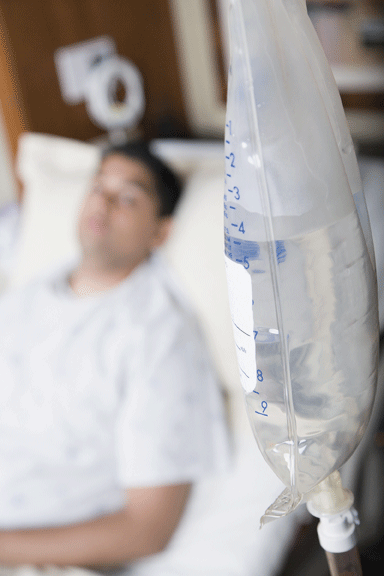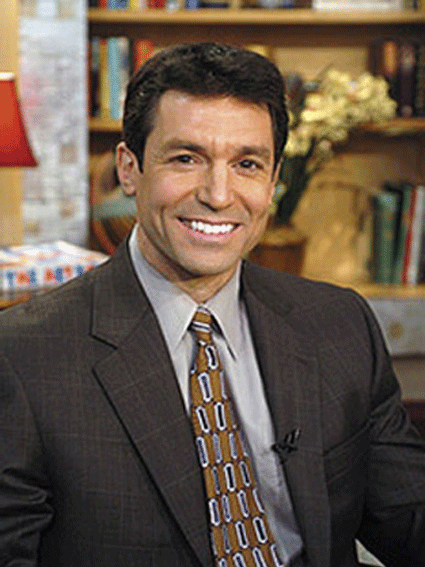
Diet and Health

Prostate Cancer Conundrum
New findings about the merit of prostate cancer screening pose a challenge that a patient and doctor need to discuss together, absent an established guideline. Meanwhile men should be aware that “even the genes that influence prostate cancer risk can be modified by healthful living
Prostate cancer is the second most common malignancy in American men after skin cancer, and the second leading cause of cancer death behind lung cancer in the same group. Nearly 30,000 men die of prostate cancer each year in the United States.
It thus stands to reason that if we have the means to screen for, find and treat prostate cancer early, we should do so. It stands to reason, but it’s wrong.
Screening for any disease is, very literally, looking for trouble. That is certainly worthwhile when you can find trouble in its early stages and reliably prevent it from ever getting worse. But when you are not sure what to do with the trouble you find -- or not sure if it even really is trouble -- then screening itself is potentially more trouble than it’s worth.
We can screen for prostate cancer, using the PSA blood test and digital rectal exam. These methods allow us to find prostate cancer with acceptable, if not perfect, reliability. But that’s where the trouble begins. Most men who die after age 80 die with prostate cancer, but not of it. That is to say, they have prostate cancer when they die, but it is not troubling them at all. Prostate cancer often either does not progress at all, or progresses too slowly to cause clinical illness before death from some other cause occurs.
At present, we lack the ability to distinguish reliably between the minority of prostate cancers that will progress to cause death, and the majority that will not. Finding and treating them all the same could, in theory, save lives, but could also confer net harm by imposing a cure on many men that is far worse than their disease.
The U.S. Preventive Services Task Force has examined the scientific literature on prostate cancer with these trade-offs in mind, and has concluded that they can’t reach a conclusion. Stating that the evidence is “insufficient” to recommend for or against screening in most men, the task force guidelines -- widely recognized as the bible for clinical preventive services -- pass the buck to doctor and patient who are advised to discuss the matter and decide what to do.
This potentially frustrating inconclusive conclusion was given a nudge further toward a state of irrevocable inconclusiveness by two studies recently published online by The New England Journal of Medicine.
The first of the new trials, run in the United States, randomized more than 75,000 men to routine screening, or standard care (which might include screening, but not as a matter of routine). After seven to 10 years, there was no clear survival benefit associated with routine screening.
 |
By: Dr. David L. Katz* |
The second trial, run in Europe, randomized over 180,000 men to screening, or routine care and found a 20 percent reduction in mortality associated with screening, but the costs of these benefits were high.
As the authors state, “1410 men would need to be screened and 48 additional cases of prostate cancer would need to be treated to prevent one death from prostate cancer.” They go on to point out, “PSA-based screening reduced the rate of death from prostate cancer by 20 percent but was associated with a high risk of overdiagnosis.” And they are right.
Why the difference between the two studies? Hard to say for sure, but one possibility is the fairly high rate of screening in the routine care group in the United States. When you compare routine screening to some screening, the differences seen will be smaller than when screening is compared to no screening at all -- which the European trial may have offered, more or less.
But the take away message is that benefits of prostate cancer screening are, if real, very small. The likelihood of being harmed by screening in some way is fairly high.
The trouble with all of this is the difference between effects at the population level, and effects at the personal level. If you happen to be one of the rare men whose life is saved by screening, then screening is certainly advantageous for you! If you are a member of the larger group harmed by screening, then vice versa. But, no one knows who’s who until after the screening is done, and then it’s too late.
So it’s all well and good for the USPSTF to pass the buck to doctor and patient. But we need to appreciate that doctor and patient will have a hard time figuring out what to do with it!
In fact, this highlights one of the generally important limitations of so-called “evidence based” practice. While evidence can be deemed inadequate for population-level guidelines, a patient still has to do something. Clinical care requires reaching some conclusion even when the evidence is inconclusive.
So what do we do?
As for me -- I will certainly get a colonoscopy when I turn 50, as recommended. But since the verdict about prostate cancer screening is that we don’t know what the verdict is -- I am in no rush to be screened, and to date (age 46) I have not been.
I do, however, apply all we know to minimize my risk of getting prostate cancer in the first place -- I eat well, I exercise, I don’t smoke, I stay lean, and so forth. I would encourage all owners of prostates to try and do the same. There is some evidence that regular sexual activity reduces prostate cancer risk as well -- I simply commend this information to you for use as you see fit.
Studies show that even the genes that influence prostate cancer risk can be modified by healthful living. The age-old choice between nature and nurture is to some degree false; we can, in fact, nurture nature. And avoiding cancer outright beats even the best of screening programs, so take good care of yourself.
As for prostate cancer screening, I am afraid I can do no better than the USPSTF. Here we enter the realm where the science of medical practice meets its art. The male in question and his doctor should talk about such things as risk/benefit trade-off, personal preference for “knowing” versus the potential bliss of ignorance, family history, etc. At the conclusion of the discussion, a decision can be reached that is just about you/him.
While the USPSTF and clinical trials can decide not to decide, doctor and patient don’t have that luxury. You and your doctor will have to make a personalized choice in light of what we know, and despite what we don’t.
* Dr. David L. Katz is an Adjunct Associate Professor of Public Health
and Director of the Prevention Research Center at the Yale University School of Medicine.
He is and Editorial Advisor to Prevention Magazine, Columnist for O, the Oprah Magazine,
and a Medical Consultant to ABC News. He may be reached at www.davidkatzmd.com.